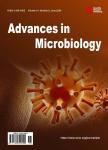Relation between Antibacterial Activity against Food Transmitted Pathogens and Total Phenolic Compounds in Grape Pomace Extracts from Cabernet Sauvignon and Syrah Varieties
Relation between Antibacterial Activity against Food Transmitted Pathogens and Total Phenolic Compounds in Grape Pomace Extracts from Cabernet Sauvignon and Syrah Varieties作者机构:Laboratorio de Metagenómica Bacteriana Facultad de Química y Biología Universidad de Santiago de Chile Santiago Chile Laboratorio de Micología Facultad de Química y Biología Facultad de Química y Biología Universidad de Santiago de Chile Santiago Chile Laboratorio de Microbiología Básica y Aplicada Facultad de Química y Biología Universidad de Santiago de Chile Santiago Chile
出 版 物:《Advances in Microbiology》 (微生物学(英文))
年 卷 期:2014年第4卷第5期
页 面:225-232页
学科分类:1008[医学-中药学(可授医学、理学学位)] 1006[医学-中西医结合] 100602[医学-中西医结合临床] 10[医学]
主 题:Antibacterial Activity Grape Pomace Extract Ethyl Acetate Fraction Total Phenolic Content
摘 要:Grape pomace is the main by-product of wine production that concentrates bioactive metabolites of polyphenolic nature with antibacterial activity. Since grape pomace composition varied depending on grape variety, climate, vineyard location, and winemaking technology, it is important to study the composition and antibacterial activity of each variety separately. In this study, antibacterial activity against different food pathogens was evaluated and its relation with polyphenols content was determined. Grape pomace from Cabernet Sauvignon and Syrah varieties was extracted with methanol/HCl 1% (v/v), followed by sequential extractions with hexane, chloroform and ethyl acetate. Ethyl acetate fraction had the highest antibacterial activity determined through the microdilution method, reaching over 90% of inhibition at 500 μg·ml-1 with the exception of Salmonella Typhi (70% of inhibition). Staphylococcus aureus and Escherichia coli were the most susceptible strains, exceeding 50% of inhibition at 62.5 μg·ml-1. Ethyl acetate fraction contains the highest phenolic concentration in both Cabernet Sauvignon (132.2 mg of GAE g-1) and Syrah (102.6 mg of GAE g-1) pomace, as determined by the Folin-Ciocalteau method. Antibacterial activity present in grape pomace extracts is in direct relation to the polar phenolic content, in particular that from Cabernet Sauvignon.



